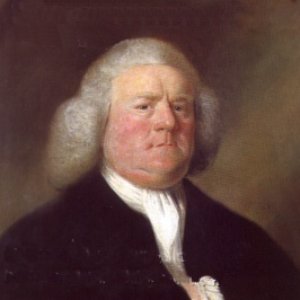In the rich tapestry of 18th-century music, few figures stand out as true innovators, quietly shaping the future of classical music from the shadows of obscurity. Georg Matthias Monn, born on April 9, 1717, in Vienna, Austria, was one such unsung hero whose contributions to the development of classical music forms were as profound as they were understated.
Monn’s early life was steeped in music, growing up in a family where his father and older brother were both accomplished musicians. This nurturing environment kindled young Georg’s passion for music, leading him to pursue a career that would ultimately bridge the gap between the Baroque and Classical periods.
As a young man, Monn’s musical education took him through the hallowed halls of Vienna’s musical institutions. He studied organ and composition, honing his skills under the tutelage of some of the city’s finest musicians. By his early twenties, Monn had already secured a position as an organist at the Karlskirche, one of Vienna’s most prestigious churches. This role not only provided him with a steady income but also offered a platform to showcase his burgeoning compositional talents.
It was during this time that Monn began to experiment with musical forms, pushing the boundaries of what was considered acceptable in the Baroque tradition. His most significant contributions came in the realm of instrumental music, particularly in the development of the symphony and the keyboard concerto.
Monn’s symphonies, composed in the 1740s, were groundbreaking for their time. He expanded the traditional three-movement sinfonia form, adding a fourth movement – typically a minuet and trio. This innovation laid the groundwork for the classical symphony as we know it today, influencing later composers such as Haydn and Mozart. Monn’s symphonies were characterized by their clear structure, thematic development, and emotional expressiveness, elements that would become hallmarks of the Classical style.
Perhaps even more revolutionary was Monn’s work in the realm of the keyboard concerto. His Concerto for Harpsichord in D major, composed around 1750, is considered one of the earliest examples of a keyboard concerto in the new galant style. This piece showcased Monn’s forward-thinking approach, featuring a solo part that was fully integrated with the orchestra rather than merely accompanying it. The concerto’s structure, with its clearly defined sections and thematic development, foreshadowed the classical concerto form that would be perfected by Mozart in the following decades.
Despite these innovations, Monn’s music retained elements of the Baroque style, creating a unique fusion that epitomized the transitional period in which he lived and worked. His compositions often featured contrapuntal techniques alongside the newer, more homophonic textures that were gaining popularity. This blend of old and new made Monn’s music both accessible to his contemporaries and influential for future generations.
Beyond his instrumental works, Monn was also a prolific composer of sacred music. His masses, motets, and other liturgical pieces were well-received in Vienna’s churches, showcasing his versatility as a composer and his deep understanding of both sacred and secular musical traditions.
Tragically, Monn’s promising career was cut short by his untimely death on October 3, 1750, at the age of just 33. Despite his brief life, his impact on the development of classical music was significant and lasting. Many of his innovations in form and style were adopted and further developed by the great masters of the Classical period who followed him.
In the years following his death, Monn’s music fell into relative obscurity, overshadowed by the towering figures of Haydn, Mozart, and Beethoven. However, music historians and performers in the 20th and 21st centuries have begun to rediscover and appreciate Monn’s contributions. His works are now recognized as crucial links in the evolution of classical music forms, bridging the gap between the Baroque and Classical periods.
Georg Matthias Monn’s legacy serves as a reminder of the often-overlooked figures who play pivotal roles in shaping musical history. His innovative spirit, willingness to experiment with established forms, and ability to blend old and new techniques make him a true pioneer of his time. As we continue to explore and perform Monn’s music today, we gain not only a deeper appreciation for the roots of classical music but also a glimpse into the creative mind of a composer who dared to push the boundaries of his art. In the grand symphony of music history, Georg Matthias Monn’s voice may have been brief, but its echoes continue to resonate, inspiring musicians and music lovers alike to explore the rich tapestry of classical music’s evolution.


